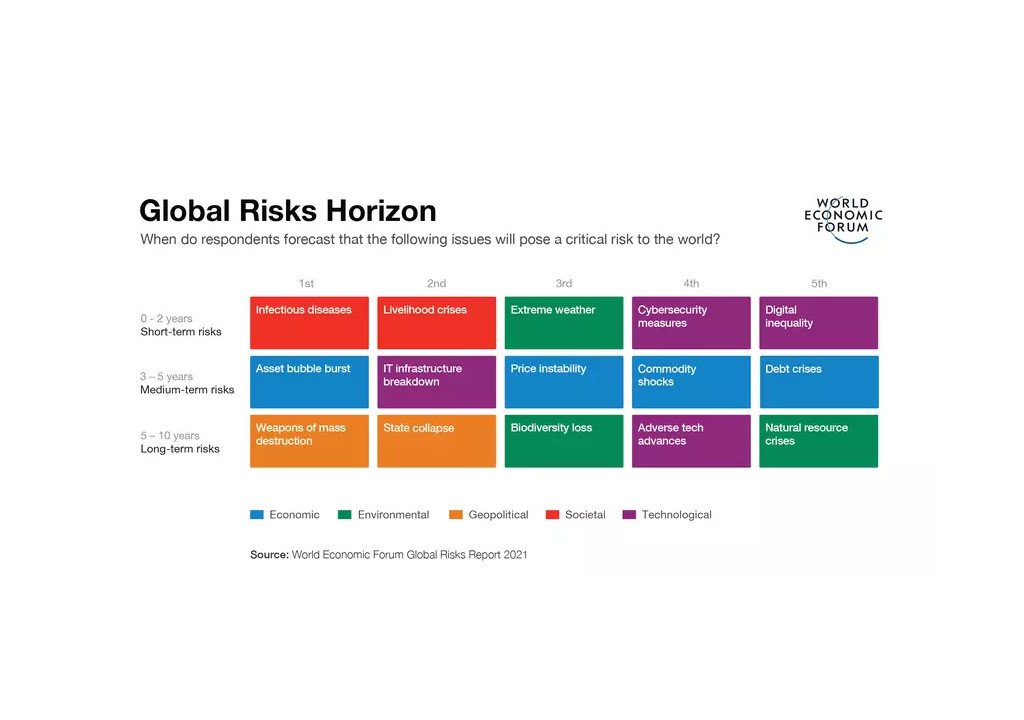Cybersecurity failure has been ranked fourth in the ‘clear and present danger’ category of the World Economic Forum Global Risks Report 2021. The 16th edition of the report is based on the results of the Global Risks Perception Survey which is completed by over 650 members of the World Economic Forum’s diverse leadership communities.
This is the first time the report has also rated risks according to when respondents perceive they will pose a critical threat to the world. The clear and present danger category covers the most imminent threats which are expected over the 0-2 years. Cybersecurity failure also features in the top 10 for the knock-on effects category, expected to take place over the next 3-5 years.
The report defines cybersecurity failure as business, government and household cybersecurity infrastructure and/or measures being outstripped or rendered obsolete by increasingly sophisticated and frequent cybercrimes, resulting in economic disruption, financial loss, geopolitical tensions and/ or social instability.
Commenting on the report, Carolina Klint, Risk Management Leader, Continental Europe, Marsh stated: “As businesses transform their workplaces, new vulnerabilities are emerging. Rapid digitalisation is exponentially increasing cyber exposures, supply chain disruption is radically altering business models, and a rise in serious health issues has accompanied employees’ shift to remote working. Every business will need to strengthen and constantly review their risk mitigation strategies if they are to improve their resilience to future shocks.”
“Admitting that a problem exists is the first step in overcoming that problem,” added Jonathan Knudsen, senior security strategist at Synopsys. “The World Economic Forum ranks cybersecurity failure as the fourth most pressing clear and present danger to the global economy. Managing cybersecurity requires organisations of all types and sizes to address cybersecurity directly. Organisations that use software (basically everyone) should put policies and processes in place to minimise risk and protect data. Organisations that build software must make security an integral part of their development efforts. The costs of managing cybersecurity today are a small price to pay in comparison with the mammoth costs of cybersecurity failures in the future.”
Javvad Malik, security awareness advocate at KnowBe4, noted that: “As technology has engulfed every aspect of life and society, it is no surprise that cybersecurity failure is viewed as a clear and present danger. Given the trends of recent years, breaches have shown no signs of slowing down. In fact, the impact of breaches have risen, not just in terms of financial cost, but impacting individuals privacy and livelihood. It’s also good to see digital inequality captured as a risk. It can be easy to overlook digital inequality. But without the latest devices or fast internet connectivity, many people are left behind in terms of cybersecurity as well as learning opportunities. Collectively, it is important that a culture of cybersecurity is embedded globally from manufacturers, to designers, to resellers, implementers, and users. Cyber security should not be for the privileged few, and neither should it require so much user interaction that it becomes overlooked. Only then will we begin to see changes which are needed to address some of these most pressing issues.”
Read the full report here.






